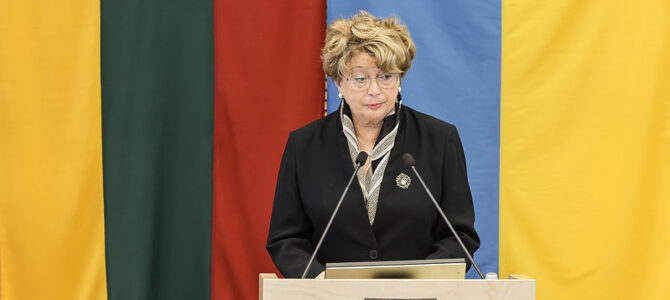At a special meeting of the Lithuanian parliament held today to mark the 80th anniversary of the liquidation of the Vilnius ghetto, Lithuanian Jewish Community chairwoman Faina Kukliansky called for remembering the contributions Jews made to the birth and development of the Lithuanian state before the Holocaust.
“It seems to me the memory of the history of Lithuanian Jews and the Vilnius ghetto has been reduced to official events, excursions and interactive tours for foreigners,” she noted.
Kukliansky said this wasn’t the first time she was forced to remind politicians and the Lithuanian public that plans for the Ponar Memorial Complex and other projects haven’t been completed.
“Every year I speak from this podium, saying there is no monument to rescuers of Jews. … If this is impossible to do for so many decades, let’s at least stop commemorating those who sowed death and hatred of the Jewish people,” Kukliansky told the Lithuanian parliament, foreign ambassadors and other guests.
She also addressed the problem of anti-Semitism.
“Today, anti-Semitic statements should not cause us fear, but disgust and anger. Unconditional condemnation is the only possible reaction to the language of hatred, which, unfortunately, I hear more and more often. Doesn’t anyone else hear anymore? Or do they hear, but remain silent? Silence is just as dangerous,” LJC chairwoman Kukliansky said.
She said about the Vilnius ghetto that it wasn’t sufficient to know its borders in the Vilnius Old Town. that it wasn’t just plots of land, streets and houses: “People lived there, although they were driven there by force. Looking death in the eyes, they organized exhibitions, concerts, staged performances and prepared for resistance against the Nazis.
“The choice made by Abba Kovner, Shmerke Kacherginski, Fania Brantsovskaja who is still with us, a living witness to the destruction of the Vilnius Jewish community, and all the other ghetto fighters to join the resistance movement signified only one thing: trading death in the ghetto for death in the forest. Those who survived went on to fight a new battle which continues even now, the struggle to preserve memory,” Kukliansky said.


